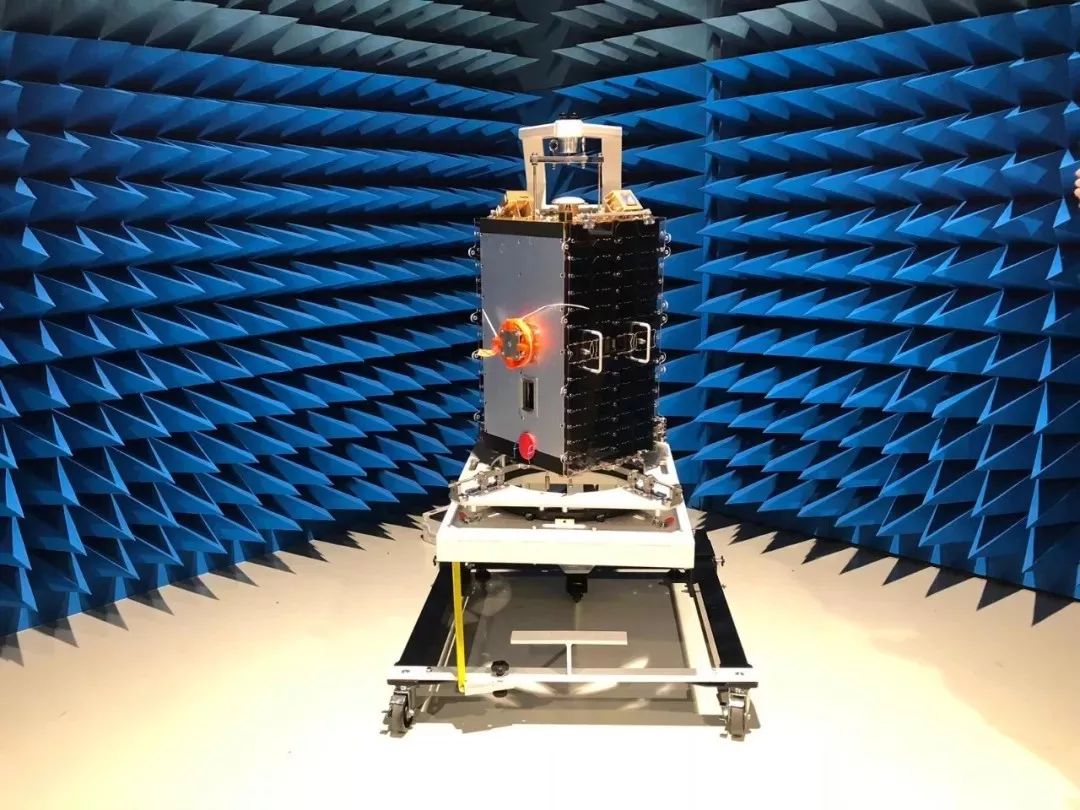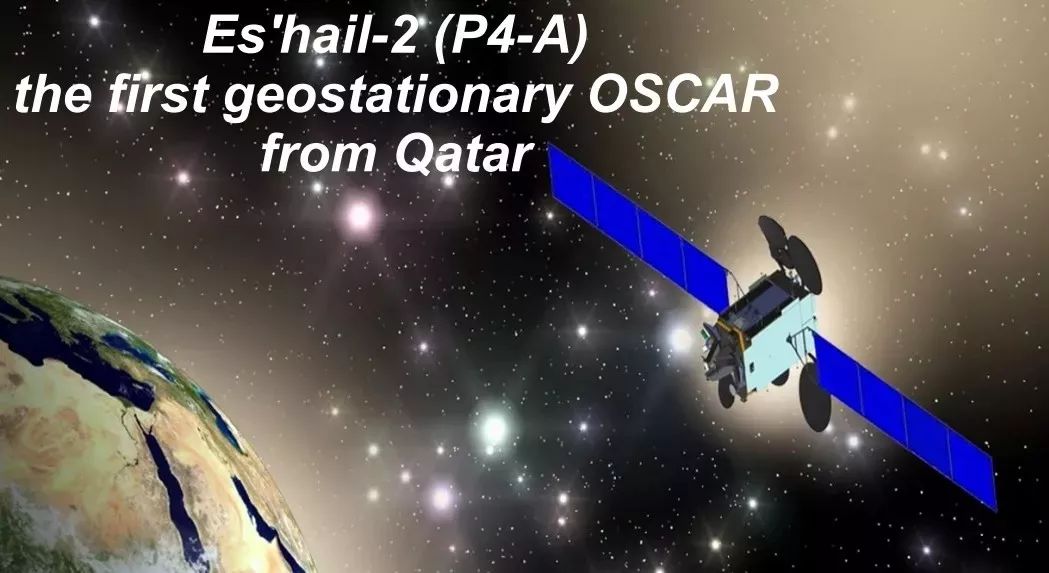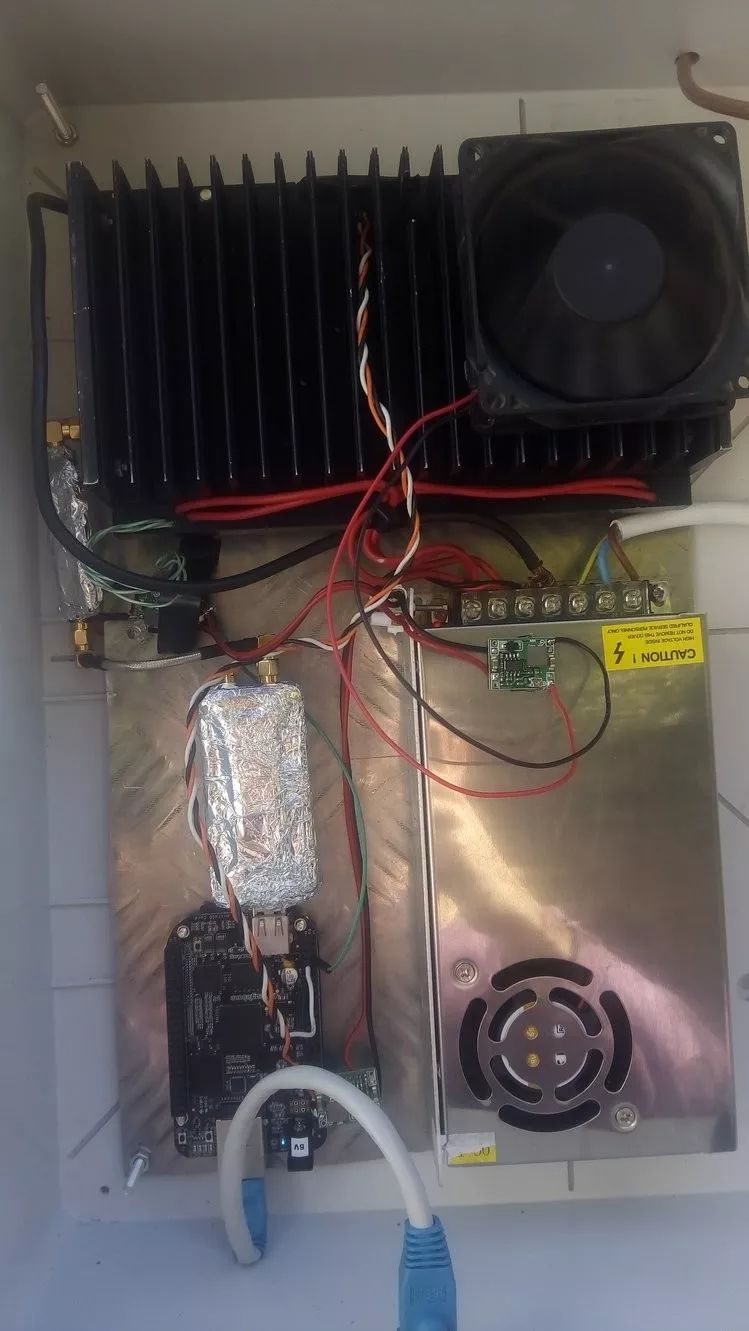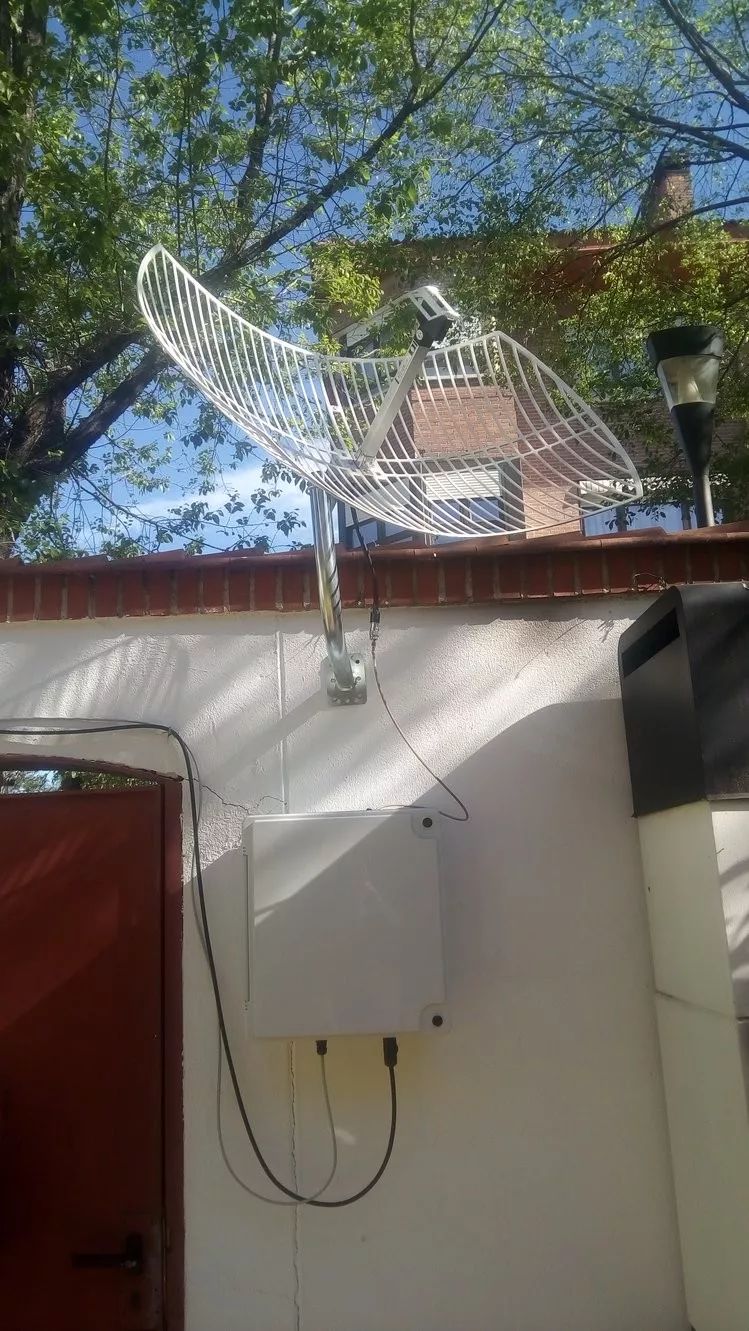

LimeSDR Mini Satellite Ground Station Author: Daniel Estévez
My project uses the LimeSDR Mini as the basis for a ground station for the geostationary satellite “Es’hail 2” (known as “QO-100” in the amateur radio community). The satellite includes two linear transponders, one of which is 250 kHz wide and suitable for narrowband modes such as single sideband analog voice, text-based digital modes, and telegraphy. The other is 8 MHz wide, used for DVB-S2 and other broadband digital modulation and experimentation. The satellite covers one-third of the world’s area (from Brazil to Thailand) and is the first amateur radio payload in geostationary orbit. It also provides an incredible platform for experimenting with different communication scenarios.

The satellite’s downlink is in the 10 GHz band, so cheap satellite TV LNBs can be used to receive the signal and downconvert it to an intermediate frequency of about 700 MHz, which can be easily handled by SDR or traditional radio receivers. The satellite’s uplink is in the 2.4 GHz band. Many people are using upconverters to convert the signal from 430 MHz to 2.4 GHz. However, with LimeSDR, you can generate the 2.4 GHz signal directly.
My design is housed in a weatherproof box, allowing it to be mounted outside the transmitting antenna. This is important because it limits the losses in the coaxial cable of the feed antenna. Losses at 2.4 GHz can be quite high, so keeping the coaxial cable as short as possible is desirable.

Inside the Ground Station
Using narrowband signals through the satellite transponder does not require much power. In fact, many people are using inexpensive WiFi amplifier modules to achieve about 2 watts of power. However, DVB-S2 requires more power, especially if transmitting high-definition video at several Msps symbol rates. Therefore, my weatherproof box includes a 100 W amplifier, which is an enhanced amplifier for 2.1 GHz UMTS.
The LimeSDR Mini cannot provide enough power to drive this 100 W amplifier. Therefore, I use a Mini-Circuits GALI-84 MMIC to boost the output of the LimeSDR from about 0 dBm to 20 dBm, comfortably driving the 100 W amplifier. The GALI-84 driver amplifier is built using the MiniKits kit.
To control the LimeSDR Mini, a Beaglebone Black ARM single-board computer is included in the weatherproof box. The Beaglebone Black connects to my LAN via Ethernet, allowing control of the LimeSDR Mini and other devices (e.g., enabling or disabling the RF power amplifier).
The box also contains a power supply that converts 230 VAC from the 100 V amplifier to 26 VDC, which requires significant current. Currently, a 10 A power supply is used, but it does not provide enough current, so I plan to upgrade to a 30 A power supply. Other devices are powered from the 26 VDC using small DC-DC converters. The Beaglebone Black uses 5V, the GALI-84 amplifier and 100W amplifier are biased at 12V (the enable pin is controlled by the GPIO pins of the Beaglebone Black), and the amplifier fan operates at 12V (always on). A TMP36 temperature sensor is mounted on the heatsink of the 100W amplifier, controlled by the Beaglebone Black.
Currently, the weatherproof box is only used for the uplink. For the downlink, the IF signal from the LNB enters my home via cheap 75-ohm coaxial cable and connects to my laptop’s LimeSDR via USB3. I also plan to route the IF signal from the LNB to the LimeSDR Mini in the weatherproof box, allowing any computer connected to the LAN via Ethernet to control the ground station’s uplink and downlink.

Ground Station Setup
Another planned modification to the setup is to feed a reference signal (e.g., 10 MHz) into the weatherproof box to serve as a frequency reference for the LimeSDR Mini. For 2.4 GHz narrowband signals, the frequency stability of the transmitter is very important, and the TCXO on the LimeSDR Mini is suitable for many applications. Using a 10 MHz reference from a GPSDO at home will provide the best performance and allow for very precise frequency measurement experiments.
This platform is very powerful and flexible, allowing for various experiments. It is designed for computers on the home LAN, so the Beaglebone Black acts as a bridge between IQ samples over Ethernet and USB. However, you can also deploy some simple standalone SDR applications on the Beaglebone Black, allowing the ground station to operate autonomously.
Thus, there are still many experiments to be done regarding the software setup. Currently, on the Beaglebone Black, I use Evariste “F5OEO” Courjaud’s limetool to send IQ samples to the LimeSDR Mini. These IQ samples are generated on my laptop using GNU Radio and streamed via TCP. I also use simple Python scripts from SoapySDR to generate test modulations.
Besides single sideband analog voice and DVB-S2, they represent most of the current uses of the Es’hail 2 repeater, and it can also be used for very interesting future experiments. Some of these include using spread spectrum modulation to transmit very low power signals buried in noise, testing optimization of data modems by experimenting with different modulation and FEC algorithms, performing PRN modulation through the repeater for satellite ranging, and executing bidirectional frequency and bandwidth transmission, achieving TCP/IP connections with GSE and DVB-S2.

Regarding the rest of the ground station, I am currently using a 24 dBi WiFi grid parabolic dish for the uplink, but I plan to replace it with a 1.2-meter offset dish and use a custom circular polarized feed for 2.4 GHz. For the downlink, I use a 1.2-meter offset dish and a modified cheap commercial Ku-band LNB to use an external 27 MHz reference.
The platform is designed with some very flexible features, allowing for many different SDR experiments and controllable from anywhere in the house via Ethernet. I believe this solution is very suitable for these goals. Some difficulties I encountered relate to the spurious emissions from the LimeSDR. When the output is amplified to 100W, local oscillator leakage and IQ imbalance images become very noticeable. Clever things can be arranged so that these spurious signals do not interfere with other users or might be filtered out in some cases.
source: www.crowdsupply.com

What you should know about this synchronous satellite:
[Ham News] Many satellites have been launched recently | This geostationary satellite Es’hail-2 should be of most interest to hams!
[Ham News] The first amateur synchronous satellite with a digital signal at 2.5mW | This German ham succeeded!
[Ham Classroom] Es’hail-2 | Standard configuration of the first amateur geostationary satellite ground SDR receiving station revealed
